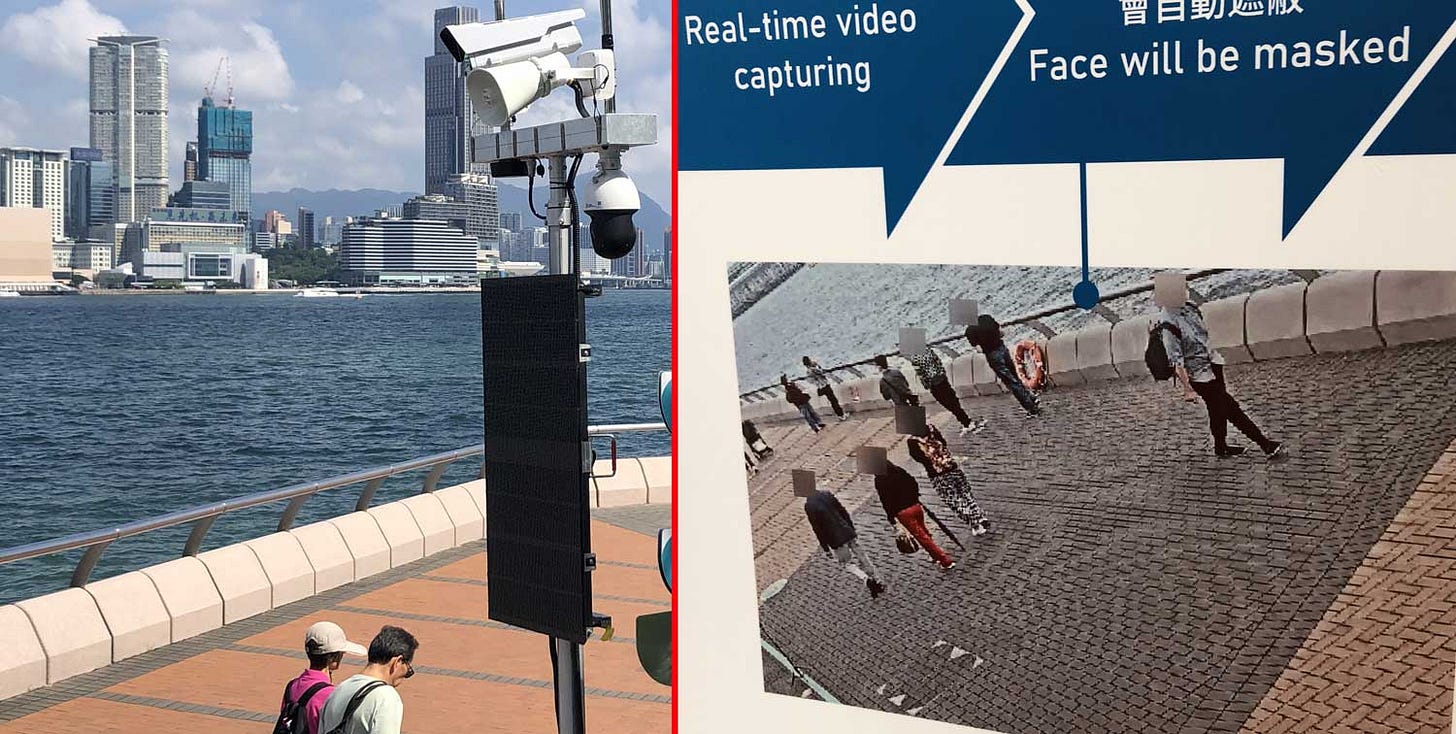SNOOP SCOOP! Cops using parked cars to build 24-hr CCTV network
Hamstrung by privacy laws on CCTV deployment, police are turning to the humble dashcam to build an unregulated 24-hour district surveillance network
Police in Kowloon East are recruiting thousands of drivers to install 24-hour surveillance cameras in their parked vehicles and link into a massive new community recording network.
The project, dubbed “Project CARCAMS” has nothing to do with traditional dashcam road safety but will use parked vehicle cameras as district surveillance tools to “strengthen community security,” according to a police blurb.
Promoted widely on social media by pro-establishment district council candidates, including DAB’s Tsang Wing-fai, a police video says citizens can easily sign up. “The goal of this program is to encourage car owners to install 24-hour driving recorders on their vehicles and join our crime prevention network, committing to retain and provide the images captured by the driving recorders to the police when necessary to assist the police in investigating crimes,” says the video.
There’s almost a million vehicles in Hong Kong, offering a potentially inescapable mesh of camera coverage untroubled by the longstanding issues which have dogged CCTV camera placement.
Partly as a result of a sharp public backlash to camera surveillance (including the chopping down of a “smart” lamppost with a chainsaw during the 2019 unrest), the Hong Kong Police Force has relatively few1 dedicated CCTV cameras: of the 40,000 fixed cams owned by the government, police claim only around 2502 and officers rely on building, MTR or vehicle CCTVs when investigating crimes3.
Where police or other government departments have deployed cameras, they stress the technology would not have “facial recognition” functions or transmit face data: for example, the new traffic enforcement cameras on Queen’s Road Central do not record facial features, according to a police source, mainly to avoid privacy concerns blocking the otherwise useful tech. Other cameras, such as new ones spotted on the harbourfront a few weeks ago4, claim to “blur faces” when sending data.

But no such rules apply to individuals joining the new police camera network and there are no laws, other than the laws of physics, preventing vehicle owners capturing, in full HD, the face of everyone who walks past their car, 24-7, without any warning or permission.
While there may be some genuinely useful police work going on, the issue is how a potentially million-camera high-definition 5G surveillance network is being built right under our noses.
Once owners have signed up to the Kowloon East scheme, they consent to pass any video to police upon request. For now, police can’t access the video or images directly: and, as I have found the hard way, sharing bike camera evidence with police is still ridiculously laborious in Hong Kong5. But privacy concerns in the US over, for example video doorbells, show how a cloud-based camera network could easily be abused by zealous authorities.
In July this year, Politico exposed how Amazon-owned doorbell company Ring was sharing footage with US law enforcement without user consent: in one case, footage from around 20 cameras inside and around a Ring owner’s house was handed to cops after a crime on the street in front of the house.
And in 2020, police in Jackson, Mississippi piloted a scheme where footage from a volunteer network of Ring cameras was streamed live to a real-time police surveillance centre.
The Hong Kong scheme is nowhere near as sophisticated as the Mississippi project... yet. For now, vehicle owners simply log their location and share footage if asked. But with cloud dashcam devices becoming more popular on 5G networks, and network providers such as Three specifically selling cloud dashcams as “24-7” security devices, it’s surely only a matter of time before the feeds end up in a police surveillance centre or a “District Care Team / Fight Crime Committee” monitoring hall, voluntarily or otherwise.
publicly-declared
although they deploy many more temporary cameras at events, not to mention bodycams on almost every officer and dedicated video units popping up as needed
that said, the networks and facial recognition technology at their disposal must be already pretty impressive: when they want to track someone down, it usually takes only a few hours unless the target has dropped out of the urban area altogether
a pilot relating to the shared bike path, since removed
Police online platforms have a “1995 dial-up” size limit and, if cases go to court, video evidence needs to be burned onto not one but three CD-ROMS. Those signing up to turn their cars into police surveillance assets should be warned, they might need to go to a dusty corner of a Sham Shui Po computer market and buy a CD burner...





Great article! The extra commentary on how weak privacy laws are in US is also appreciated though it is only a matter of time before the HK police catch up with the Mississippi project. You know I do recall ordinary crime (burglaries, etc) being significantly lower before NSL and it didn’t require any kind of sophisticated cam network, just police resources that aren’t focused on so called “national security crimes” which amount to people making unflattering remarks about HK govt and CCP on social media